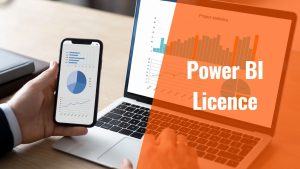
Cloud Computing Trends You Need To Know for 2021
Today work scenarios have evolved and actively took a shift from physical locations to remote work stations. It has made the on-premise services move to the cloud IT infrastructure where local technology services could be unified into cloud-based solutions with unlimited access. Moreover, the increasing benefits of cloud-based business solutions are pretty gleaming too.
Connecting to the current scenario, as telecommuting is part of the new normal, cloud computing services and platforms along with the robust security protocols and flexibility enable businesses and their employees to make more informed data-driven decisions.
Plus, it enabled the expansion of teams through resource pooling, addressing network configurations, on-demand delivery, and IT support by cloud service providers and platforms with ensured risk compliance.
Cloud computing platforms have caused businesses to accelerate and plan to analyze and manage inputs that drove in revenues, mostly preventing the company’s work from coming to a halt due to the pandemic situation.
“Technology requirements have advanced yet facing complexity over the past year due to workplaces adopting decentralization during pandemic activating remote working across the globe”, stated Steve Miller-Jones, VP of Edge Strategy at Limelight Networks.
Contemplating all the specifications and requirements of what businesses are attempting to sustain their growth, cloud computing is trendy to keep it intact.
Let’s look up to the cloud computing trends that scale the businesses in 2021.
Public Cloud will Rule Over the Cloud Market
Public Cloud service providers like Amazon Web Services (AWS), Microsoft Azure, and Google Cloud Platform will continue to inflate their leading market share and have established their platforms as one-stop shops.
Spending on enterprise cloud has increased 34 percent from the past year. IDC projects that the overall spending on global cloud infrastructure will double by $500 billion over the coming two years.
The public cloud budget skyrocketed over $300 billion during 2020. It relied on cloud-based solutions and made it a source to work from has contributed towards the economy and its hike in growth rate.
Integrating Edge To Cloud Strategy
trends of cloud computing does not completes without addressing edge computing. Deploying edge empowers devices to gather and process data with low latency in real-time for more effectiveness, all in one approach to network infrastructure which several enterprises are hoping to connect centralized cloud with its end users.
Integration of edge within a cloud computing approach would help scale innovative developments in 2021.
According to Miller-Jones, “Developers with the help of this integration could transfer application services from the cloud to locations of the network edge.”
AI Engineering in Cloud Computing.
AI within cloud computing not only helps businesses being foresighted but also being cost-effective and agile. Could computing trends in 2021 have a lot to tell about AI and its magic.
According to McKinsey, “Value addition from AI into cloud computing could be high as $15 billion.”
“A robust AI engineering strategy helps with performance, scalability, and predictability of AI models utilizing AI investments”, briefed by Top Strategic Technology trends for 2021 report.
Read Here: How Does Artificial Intelligence Revolutionize the eCommerce Industry?
Hybrid and Multi-Cloud Offerings.
With its roots within the cloud market, the public cloud has impelled traditional computing companies to emphasize more and increase their spending on hybrid and multi-cloud models and offerings. The same is expected by AWS, Google, and Microsoft from the enterprise’s cloud administrators.
To maintain efficacy within several IT operations, companies need to consider and ensure security within networks, applications, and data to facilitate the benefits of a multi-cloud environment.
IT workers will rely more on hybrid and multi-cloud services and tools to eliminate the risks of ending up with a particular cloud service provider in 2021.
Serverless is an Emerging Option with Data Containers and Kubernetes.
Cloud computing future is likely to embrace server less technologies more. Any developer can use serverless computing, it’s a much-preferred model included amongst top PaaS services for the recent year. Developers could design and develop applications with the serverless interface leading to higher functionality.
Kubernetes as a go-to serverless system will increase the use of containers in the public and private cloud.
A report by IDC estimates the deployment of microservices in data containers by 2021
Read Here: Application Modernization with Containers & Microservices
Automated Cloud Orchestration and Optimization Still the Keyguard.
To limit the complexity of governing services across applications, orchestration qualifies automated tasks’ performance throughout the workflow.
Performance management is one of the detail to notice while selecting a cloud service provider in 2021 as organizations might require to deal with more services from a single cloud provider.
Faas Application in the Cloud.
FaaS (Function as a Service) is the subpart of the serverless computing service where developers could create codes faster without the complex infrastructure associated with developing the application.
More IT professionals in 2021 would prefer FaaS for their work.
Cision indicates, “FaaS can lead to market expansion up to $7 million contributing to annual growth rate by 30 percent.
Incorporation of Big Data, Cloud Computing, and IoT
Big data helps identify the enterprise’s data after being processed and analyzed, IoT (Internet of Things) is the network of physical devices for exchanging data with other devices over the internet.
Cloud Computing’s inclusion with Big Data and IoT will help businesses maximize their efficiency through rising production, and maintaining an edge over the competitors by utilizing the information obtained, enhancing it to their benefit.
Hyper-Scale Data Centers
Promptness in data consumption each day is causing organizations to speed up their pace in delivering services that are not possible completely without an IT infrastructure and its ability to scale provisioning with the high demand.
Hyper-scale data centers could respond to demand and assists with scaling. This market’s annual growth rate could rose to 26 percent between 2017-2022.
DaaS as the New Cool
Virtual Cloud Desktops, known as DaaS (Desktop as a Service), is another computing model steadily making its place and a good option where the workforce could efficiently finish off their work and tasks complying with timeliness and integrated technology.
Offered by Amazon via Workspaces platforms, Microsoft with Windows Virtual Desktop, and Google through Chromebook devices.
Bottom Line
Sooner this year, 5G services would be seen as another challenge for cloud-based organizations. With 5G speed and connectivity via IoT (voice assistants, wearables) will create huge possibilities to comprehend.
2021 might become the progressive year for IT with tech interventions within various sectors; then for sure, the cloud computing market would keep evolving.





Comments
No comments yet.